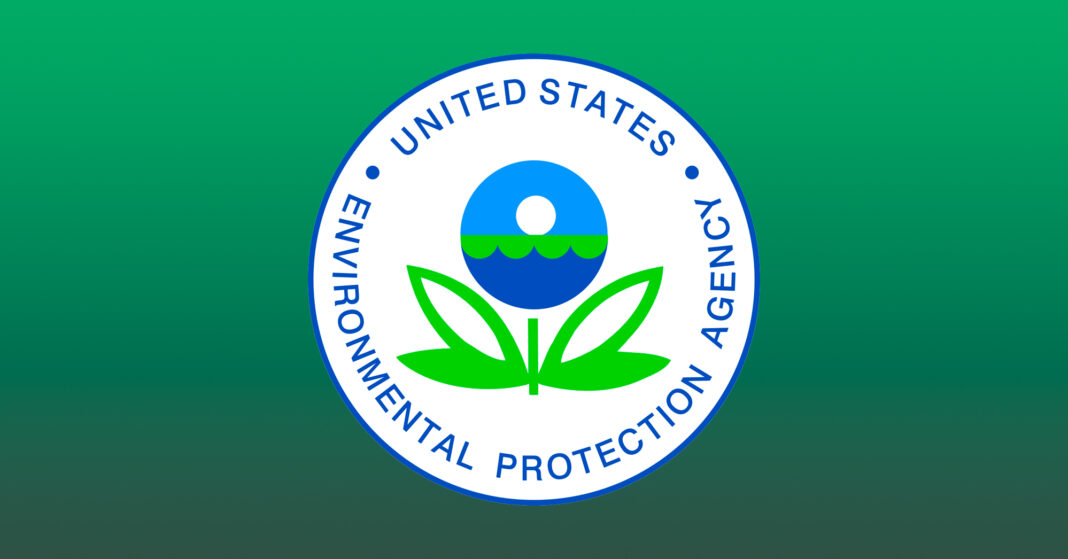This story was originally published by ProPublica.
As part of a sweeping announcement detailing strategies to crack down on toxic industrial air pollution, the U.S. Environmental Protection Agency announced this week it was moving to formally reject Texas’ less protective standard for the potent carcinogen ethylene oxide and stick with its own scientific conclusions, a move that clears the way for significant reductions in emissions nationwide.
EPA Administrator Michael S. Regan announced the decision after an investigation by ProPublica, in collaboration with the Texas Tribune, revealed that ethylene oxide, a low-odor, ubiquitous gas that is used to make everyday household items like dish soap, is contributing to the majority of the excess industrial cancer risk in the United States.
In 2016, nearly two decades after it began assessing ethylene oxide’s link to cancer, the EPA concluded that the chemical was 30 times more carcinogenic to people who continuously inhale it as adults and 50 times more carcinogenic to those who are exposed since birth than the agency previously thought.
Industry groups fought the EPA throughout the assessment process, arguing that ethylene oxide was far less harmful than agency scientists determined.
The companies found an unwavering ally in Texas. A year after the EPA published its conclusions, the Texas Commission on Environmental Quality launched its own assessment of ethylene oxide that scientists have criticized for excluding studies linking the chemical to breast cancer and drawing on cherry-picked analyses of the data that the federal agency had examined. The state standard that resulted is 2,000 times more lenient than the EPA’s. (Excess cancer risk for a chemical is calculated as the number of additional cancer cases that are expected to result from a lifetime of exposure.)
Last year, after the EPA finalized changes to one of its six major regulations governing ethylene oxide, industry groups petitioned the federal agency to consider reassessing its decision and relying on the standard set by TCEQ instead of its own.
The decision announced Wednesday dealt a blow to their hope that the EPA would rely on Texas’ less protective standard.
“Today we reinforce and advance EPA’s commitment to protect overburdened communities by following the best available science and data,” Regan said in a statement. “People living near chemical plants are increasingly concerned about exposure to ethylene oxide, and the science shows it is a potent air toxic posing serious health risks.”
Neil Carman, clean air director for the Lone Star Chapter of the Sierra Club, said the announcement is a “game changer” that clears the way for significant, and more expedient, reductions in ethylene oxide emissions in Texas and across the country. He added that the decision sends a strong signal to industry that the EPA will defend its own science as the agency continues to update rules for ethylene oxide emissions.
“This really punches TCEQ in the gut, in essence, on ethylene oxide,” he said. “Once they finalize this new proposal, it’s got big effects for Texas.”
The EPA’s announcement “shows science and facts matter, and sends ripples of hope out to people breathing ethylene oxide every day, who are also seeking far more urgent and concrete action from EPA,“ said Emma Cheuse, an attorney with Earthjustice, a Washington, D.C.-based nonprofit that represents communities and environmental groups in legal proceedings.
The public will have 45 days to comment on the agency’s decision before it is finalized and five days to request a virtual hearing after the agency officially publishes its notice. But experts said the strong language the EPA used in its announcement suggests it’s not going to reverse course.
The process for incorporating the federal government’s standard into a set of rules governing ethylene oxide emissions is expected to take until at least the end of 2024. That doesn’t account for the time it will take to settle any legal challenges from industry groups.
If fully incorporated into the half-dozen federal rules that dictate how much toxic air pollution industrial facilities can emit, the EPA’s ethylene oxide standard could require more than 160 industrial plants across the country to slash emissions of the chemical.
Legal experts said that once the federal government finalizes its approach, it will be difficult for future administrations to reverse the standard as the EPA did with previous regulations under former President Donald Trump.
“That is because a court will demand reasons from EPA for changes,” said Wendy Wagner, an environmental law professor at the University of Texas. “The more good reasons EPA gives for the current approach, the harder it will be in the future for EPA to move in a different direction.”
The American Chemistry Council, the powerful lobbying group representing the chemical industry that had requested the EPA consider using Texas’ ethylene oxide standard, said in a statement that it needed to review EPA’s explanation. But the group argued that such public policy decisions should be more “inclusive,” and noted that companies that make or use ethylene oxide have invested in technologies and research to reduce emissions of the chemical.
“As a result of these actions, industrial ethylene oxide emissions have already fallen dramatically nationwide over the past two decades,” the statement said.
Still, EPA data that relies on the agency’s new ethylene oxide standard, and on emissions reports from the companies themselves, shows facilities are releasing enough of the chemical to increase cancer risk for nearby residents.
Todd Cloud, a Georgia-based air quality consultant who worked in the petrochemical industry for 20 years, said he thinks it will be difficult for many facilities to meet the EPA’s stricter standard without relocating to “the middle of nowhere” where their emissions won’t waft into populated areas.
“If that standard is accurate then there is no safe level of emissions of EtO, and the only alternative is to remove it from the stream of commerce,” he said. “That’s why you’re seeing some of the pushback here.”
The risk from ethylene oxide is particularly acute in Texas, the nation’s top ethylene oxide polluter and home to at least 26 facilities that emit the chemical. That includes a plant in Laredo, featured in the ProPublica and Tribune investigation, where employees of the Midwest Sterilization Corporation every year use millions of pounds of ethylene oxide to sterilize medical equipment manufactured just across the border in Mexico before shipping the equipment to hospitals across the U.S.
Four years ago, after the EPA incorporated its new ethylene oxide standard into a national assessment of cancer risk posed by toxic air pollution, the agency identified the Laredo plant as one of more than two dozen “high-priority” facilities whose emissions of the chemical appeared to be elevating cancer risk to levels the agency considers unacceptable.
The Laredo plant reported releasing thousands of pounds per year of ethylene oxide between 2014 and 2018, according to the most recent EPA data available. That is far more than any other facility of its kind in the country, according to an analysis by ProPublica and the Tribune.
In a statement to ProPublica and the Tribune, Midwest Sterilization Corporation said it “currently is in compliance with all federal and state regulatory standards” and has exceeded them “where possible.” These standards do not yet account for the cancer risk identified by the EPA, which would require the plant to reduce emissions.
“Since 2019, we have voluntarily reduced overall EtO emissions by approximately 90% after researching, purchasing, implementing, and testing the best available emissions control technology,” the statement said. The company declined to say whether that percentage is applicable to both its Laredo facility and another it owns in Jackson, Missouri. Midwest installed equipment to reduce ethylene oxide emissions at the Jackson location in 2019 after EPA conducted public meetings there to inform the community about ethylene oxide’s link to cancer and a wide array of other health impacts, including miscarriages.
The EPA has yet to hold such a meeting in Laredo. Many in the community did not even know the Midwest plant existed until ProPublica and the Tribune began asking residents whether they were aware it was emitting significant amounts of a cancer-causing chemical.
Since the publication of the ProPublica and Tribune investigation, Midwest has taken out full-page ads in the local newspaper that said the EPA is wrong about the dangers of ethylene oxide. The EPA is set to propose an updated regulation this summer governing air pollution from commercial sterilizers like Midwest and aims to finalize it in the fall.
Laredo officials and activists applauded the EPA’s announcement this week but said conflicting messages from the federal regulatory agency and TCEQ so far have spurred confusion that has hamstrung meaningful action to protect Laredo residents.
Vanessa Perez, a member of the Laredo City Council whose district is home to the Midwest plant, worries that the regulatory process will take years, unnecessarily exposing Laredo residents to excess cancer risk. In the meantime, she and other officials have been trying to beat back claims from TCEQ leaders that EPA’s ethylene oxide assessment is incorrect.
“The work to clarify what’s going on has fallen on us, and we’re not supposed to be here to do EPA’s job,” said Perez.
The Clean Air Laredo Coalition, an organization formed by Perez and local environmental activist Tricia Cortez after they learned from ProPublica and the Tribune about the dangers posed by the Midwest plant, began scoping out a potential partnership to conduct a pilot blood testing program among 3,000 residents after a packed and emotional town hall meeting in December. The group has also been looking into applying for a community air monitoring grant from the EPA, but Perez said the application requires technical expertise that has been hard to access.
While the EPA works to update environmental regulations, Texas’ more lenient rule will remain in effect.
“We want the TCEQ to reverse its current industry-friendly approach to ethylene oxide and go in the opposite direction, which is to do even more than what the EPA is going to ask for,” Cortez said.
The TCEQ has repeatedly defended its standard, saying the federal government is exaggerating the cancer risk posed by ethylene oxide. Officials with the state agency this week said the TCEQ would respond to the decision “in the appropriate time as part of the normal agency processes, following science and the law.”
“We will have to wait and see, but TCEQ has been put on notice that there is oversight and that communities want state agencies to do what they need them to do,” said Robert Bullard, a sociologist at Texas Southern University who has spent decades documenting the disproportionate effects of pollution on communities of color across the country.
Laredo residents who live in areas where the estimated cancer risk exceeds federal safety thresholds said protecting communities should be the most critical factor in making such a determination. One such resident is Robin Hunter Casiano, whose daughter attends first grade at an elementary school less than two miles from the Midwest facility.
“It makes me sick every time I drop my daughter off at school in the morning just to think where they’re at in relation to that factory that can be harming their health,” she said.
As part of its announcement this week, the EPA said it would be partnering with Texas Environmental Justice Advocacy Services to improve communication on environmental risk and enforcement “in response to the call for improved accessibility to language and interpretation services.”
The agency also said it is “looking at a range of approaches besides regulations for achieving emissions reductions while regulations are in development, and ensuring communities are informed and engaged as we work to address EtO.” It didn’t offer specific details about what those approaches may entail.
State Sen. Judith Zaffirini, a Democrat who represents Laredo, said she understands that reversing course might be difficult for the TCEQ, but “they should consider new information and the community’s perspective.” Zaffirini said she has met with “exceedingly concerned” residents in Laredo and has a meeting scheduled with Midwest representatives to hear the company’s perspective.
“I am extremely concerned about the impact of this carcinogen in our air, and particularly so for our school children and most vulnerable community members,” she said in an email. “While I certainly recognize the importance of Midwest’s work to sterilize medical equipment and will listen to its representatives, I cannot imagine that they would disagree with our need to prioritize ensuring the health and safety of those who live and work near the facility.”








